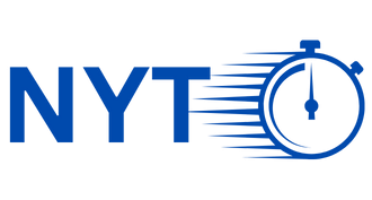The new retirement law, Secure Act 2.0, includes dozens of provisions to improve Americans’ ability to save and prepare for the future.
A vital feature of the new law is that it allows people to transfer existing 401(k) and 403(b) account balances from previous employers. The law also relaxes the rules around multiple employer retirement plans.
Increased Retirement Savings
Secure 2.0 introduced dozens of new retirement-related provisions. From better catch-up contributions to automatic 401(k) enrollment, these changes are a massive step in the right direction for helping you save for retirement.
One of the most significant new rules is a provision allowing employers to enroll employees into their company retirement savings plan automatically. Previously, workers had to opt in. Now, they’ll be automatically enrolled at a rate of at least 3% and no more than 10% of their pay. That makes saving for retirement much more manageable for many workers and allows them to increase their contributions without thinking about it.
A positive development is the introduction of a catch-up provision for individuals aged between 60 and 63, which aims to support their retirement planning. Starting in 2024, these workers can contribute an additional $10,000 to their standard account contribution limits. It can significantly help those who started late or have experienced financial setbacks.
One final change is a provision that allows military spouses to be eligible for retirement savings accounts at work. It is a great way to recognize the unique challenges that military families face in retirement planning and give them the tools they need to build a secure future.
Increased Required Minimum Distributions (RMDs)
The Secure Act 2.0 delivers many new retirement-related provisions based on the original Secure Act 2019. Some are intended to increase your access to employer-sponsored savings plans, others allow you to take more withdrawals from your accounts without penalty, and other changes reduce the taxes and penalties associated with specific errors.
For example, if you miss taking your required minimum distribution (RMD) from an IRA or take too little, the failure is subject to a 50% excise tax under prior law. Under the newly introduced legislation, it has become easier for taxpayers to rectify their errors and avoid high penalties. Now, the penalty for errors has been reduced to 25%, and if you take steps to correct the mistake within two years, the penalty can be further minimized to just 10%.
Pushing back your RMDs allows you to keep your funds growing tax-deferred for longer, but you need to be mindful of Medicare surcharges and federal income taxes at the time of withdrawal. A tax professional can help you determine the best RMD strategy for your situation.
Section 127 of Secure Act 2.0 allows employers to establish pension-linked emergency saving accounts for their non-highly compensated employees to increase the number of Americans with emergency savings. Investing in after-tax employee contribution accounts helps accumulate investment gains. It enables individuals to establish a financial cushion that can act as a safety net during unforeseen circumstances like a job loss or unexpected expenses.
Increased Catch-Up Contributions
In retirement, the rules surrounding saving and withdrawing money can be complex. But new laws are helping to simplify things. And that’s good news for people just starting to plan for the future.
One of the many changes that will impact 401(k) and 403(b) participants is that beginning in 2024, catch-up contributions must be made on a Roth basis. This change applies to employees who earn more than $145,000 per year.
Those who can make catch-up contributions can build up their retirement accounts even faster in the years leading up to retirement. That is especially important for those who have not saved during their early earning years or are struggling with a short work history.
The increase in catch-up contributions is just one of the ways that Secure Act 2.0 makes it easier to save and prepare for retirement. Other provisions include increasing the required minimum distribution age, improving individual investment options, and making moving accounts from one employer to another easier.
The Secure Act 2.0 has dozens of new provisions designed to help you prepare for retirement, whether you’re just starting out or already close to it. If you have questions about how these changes may affect your situation, we’re here to help.
Increased Emergency Savings Accounts
With over 90 provisions, the Secure Act 2.0 is a massive legislation designed to improve retirement-saving opportunities for American workers. It includes everything from increased 401(k) auto-enrollment to more straightforward error rectification for plan administrators, but some of its most significant changes may need to be clarified.
For example, section 127 of the new law allows employers to offer non-highly compensated employees pension-linked emergency savings accounts. These accounts are not part of a person’s traditional plan funds, and investments made into these accounts are not taxed (similar to Roth accounts). Having an emergency savings account can be extremely helpful in times of need. One can find peace of mind in having a safety net to cover unexpected expenses such as car repairs, medical bills, or daily living expenses. Building your emergency fund as early as possible is a proactive step toward achieving financial stability and peace of mind.
Additionally, this new legislation increases the age at which owners of tax-deferred retirement accounts must begin withdrawing their assets. Previously, the RMD age was 72, but it increased to 73 starting in 2023.
The new law also allows people who have been serial job-hoppers to transfer their previous retirement account balances into their current employer’s retirement plans. It will allow them to track their retirement balances better and avoid lost contributions. Lastly, the new law allows older workers who have yet to save as much as they would have liked to catch up by allowing them to increase their contribution limits without penalty. It is a massive win for those who started saving late or have been forced to take withdrawals due to financial setbacks.






